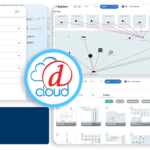In the past, professionals may have used Skype to talk to friends and family and Microsoft Lync for business needs. The two platforms have recently collided into Skype for Business, a large-scale, comprehensive communications company that continues to grow in audience and available features.
Microsoft purchased Skype in 2011 for $8.5 billion, eight years and two ownership exchanges after the inception of the VoIP company. Skype, boasting an uber-accessible UI that still exists today, featured telephony capabilities that were unavailable at the time on Microsoft’s Messenger and Lync platforms.
Many speculated the acquisition—Microsoft’s most expensive to date—would lead to integration among the VoIP and telephony communication products. And they were right.
The Transition
Near the end of 2014, three years after the acquisition of Skype, Microsoft announced it would rebrand Lync into Skype for Business—an integrated platform able to support even large-scale conferences.
Whereas Lync was capped at supporting 250 web conference participants (or 1,000 with a dedicated on-site server), Skype for Business now allows users to bypass that figure if needed, so long as they have a partner (for example, the forthcoming Skype Meeting Broadcast will allow users to host large virtual meetings like internal Town Halls and public webinars).
Related: Skype for Business: Yes, No or Maybe So?
That said, if a company doesn’t need that kind of support it can still have up to 250 meeting participants starting at $2 per user and increasing based on the chosen package.
The Future
Skype for Business already allows professionals the unique opportunity to share both thoughts and business collateral (presentations, documents, etc.) in real time and while on the Microsoft Office cloud. (Note that if you’re a Mac user, you should have access to Skype for Business by the end of 2015.)
Still, many more features are coming up for Skype for Business, including:
Switch applications in-call. The addition of a ‘call monitor’ view, allowing users to switch applications in-call while keeping a small window with controls open—yes, it’s possible to hang up from the thumbnail with other programs open.
Increased collaboration. The co-authoring of documents within remote meetings.
Anywhere can be Skype for Business compatible. The ability to turn any conference room into a ‘Skype for Business Room’ using existing projectors and TV screens (with the purchase appropriate hardware).
New engagement tools. The addition of engagement tools, like Bing Pulse or post-meeting question and answer sessions.
DVR-style control. The addition of control features using Skype Meeting Broadcast that allow individuals to pause or rewind in-progress meetings in DVR-fashion.
Multi-device capability. The ability for attendees to watch a webinar or customer event on iPads or smartphones.
Around the world calling. The addition of enterprise voice features that allow users to make and receive phone calls from around the globe. (Microsoft plans to add more countries with local dial-in numbers, thereby increasing worldwide access to Skype for Business meetings.)
As Giovanni Mezgec, general manager of Lync said on eweek.com back in 2013, when the original Lync/Skype merger was announced, “By bringing the assets that we have on the consumer front with Skype and on the enterprise front with Lync, we can have a unified platform that really brings communications from the living room to the boardroom in a way that makes sense and is rationalized and connected rather than having disconnected islands.”
And as Skype for Business continues to grow, those connections will continue to help drive the evolution of digital business.













